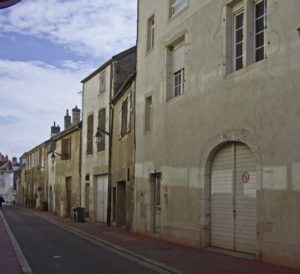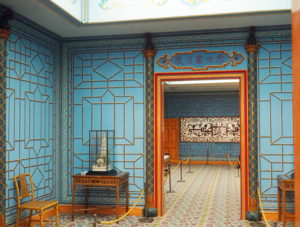The river, through the jungle, is fast flowing and meandering. Banks are steep or eroded into small beaches according to the curve of the river. Trees overlap in places, or jut out of the water. We huddle in our oversized life jackets, sweltering in the heat, smelling the dank odours of the disturbed water. The boat slows for bends and to miss floating or semi submerged tree stumps, then goes full speed on the clear sections, leaving a snaking wake behind. This is not a pleasure cruise -this is transport, to main water highway to Torugero National Park which is only accessible by boat or plane. We glide to a landing stage, peel off our life jackets and are warmly welcomed with a cool fruit drink. Our luggage boat berths next, bringing all our belongings, last seen being loaded into wheelbarrows to be taken aboard.
The lodges are perched on a narrow spit of land between the Caribbean Sea and the waterway. We are given our lodge keys, one for two people, and set off to find our home for the next two nights. The small cabins are approached by raised walkways, and are themselves on stilts. The entire split of land must be prone to flooding. From the cabin, you look down onto a damp jungle floor and up into the leaf canopy. There are windows, but no glass, insect mesh instead. Two comfortable looking beds though, and a large colonial style fan in the ceiling. You get the feeling that the jungle was there before you, and you are tolerated there, as long as you don’t mind the local wildlife. No windows meant that every howl, squeak and chirp sounded very close, especially at night. Ants had made themselves at home on the floors, so I was careful not to leave things they could crawl into. Our most spectacular wildlife visitor was a huge cricket type insect, the size of my hand with long tapering legs and antennae, which appeared one night in our bathroom. My granddaughter, who I was sharing with, was not impressed – she moved next door to her mother, leaving me undefended!
There are lots of interlinked canals and lagoons in the park, and we donned our lifejackets next morning and set off for a boat trip, leisurely this time, to see birds, mammals and reptiles that live there. It was blisteringly, so, returning to our village, I appreciated a cool dip in the swimming pool, then sat on a lounger, watching spider monkeys swinging though the trees, listening to howler monkeys and watching toucans fly across the clear blue sky.
The main reason for visiting the park is the green sea turtles, which come ashore to make their nests and lay eggs. In the past they were killed for their meat and shells, but the local villagers were persuaded that protecting them would encourage eco – tourism which was more lucrative that killing the turtles. There is now a conservation centre and well organised turtle watching tours. The tours begin late at night, and participants wait in a holding area. The tour leaders look out for turtle activity and report back to base by walkie talkie. Then there is a fast walk, in the dark, over rough ground to view either turtles coming from the sea, making their way up the beach or laying eggs. There are 20 miles of coastline, so people must be prepared to walk up to a kilometre. I am afraid I did not take part in this activity! I erred on the side of caution, not wanting to risking falling over on uneven ground in the dark. My daughter reported back that it had been a wise choice, as even she found it difficult. The grandchildren just loved it. My grandson, who was 7, 8 during the holiday, spent all his holiday allowance money adopting a turtle, and his birthday money on a fluffy turtle. He solemnly told us he would be back on his gap year after school to help with turtle conservation. Not so much exploration, as inspiration!









